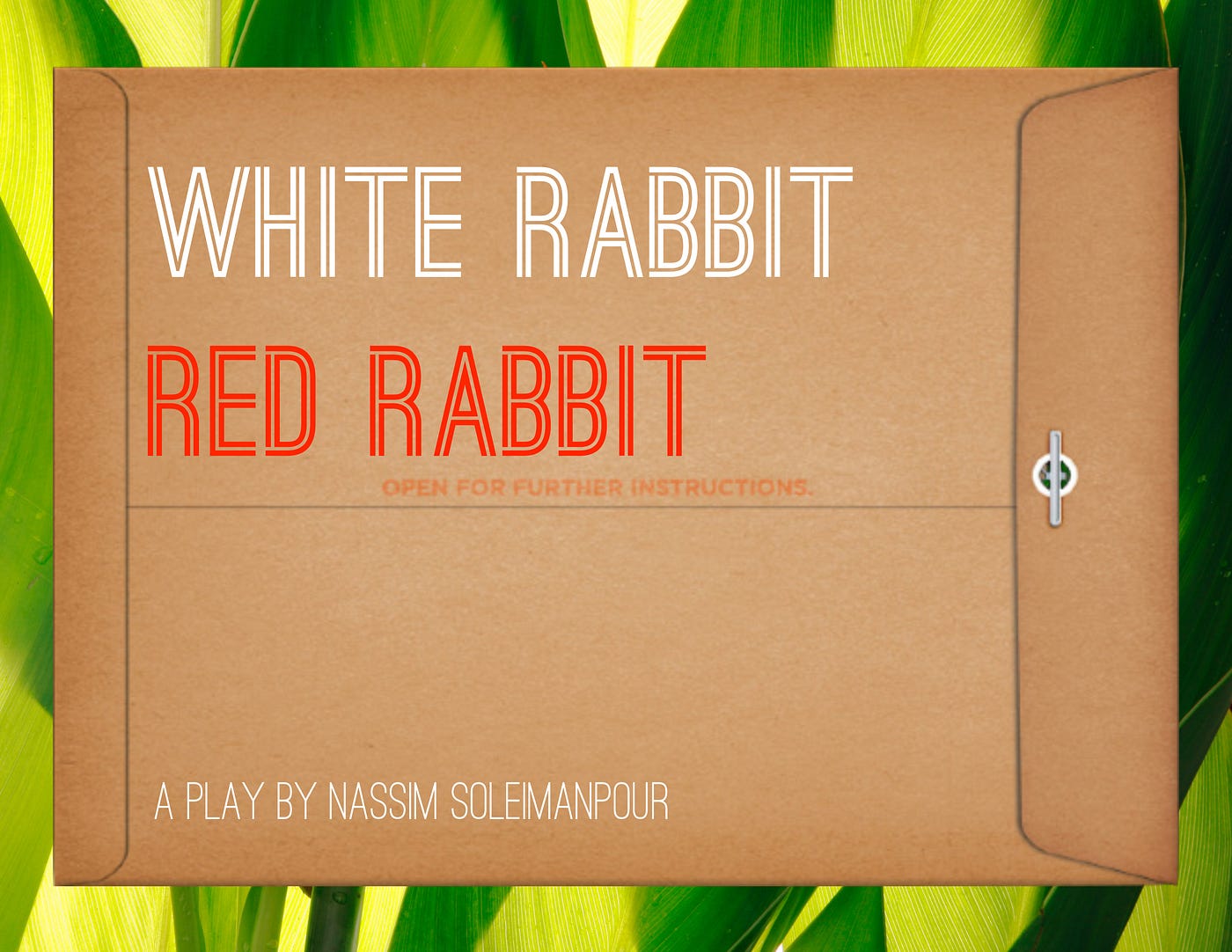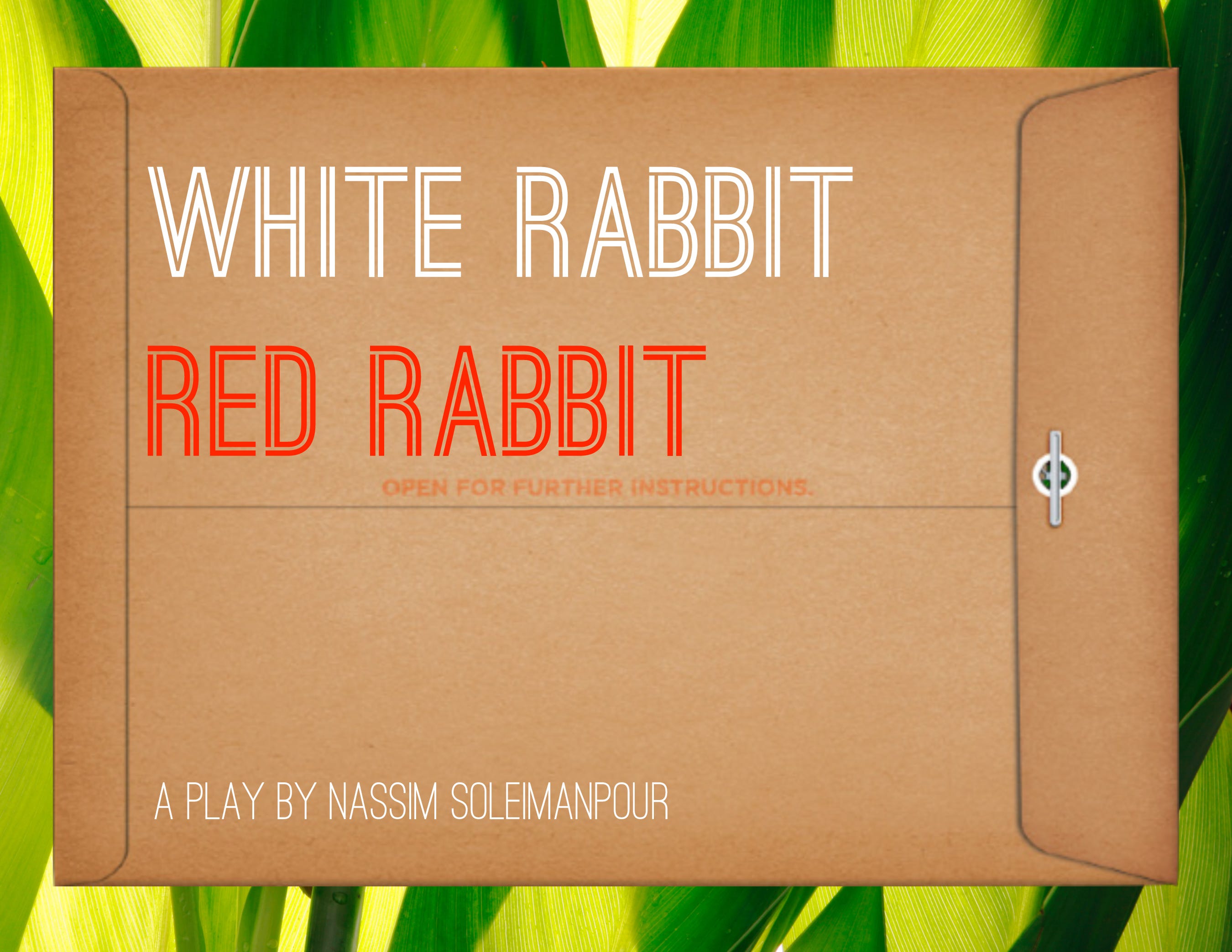
What, really, is a play?
This is not the question that I had in my mind when I went down to the Bootleg Theater to catch a preview of Iranian playwright Nassim Soleimanpour’s White Rabbit, Red Rabbit.
The play is one of the centerpieces of the Live Arts Exchange Festival that opened today. LAX Fest is the annual foray into the experimental depths of contemporary performance produced by Los Angeles Performance Practice. Each Fall for the past few years the festival has been a showcase for the strange and the bold.
What it hasn’t been is predictable, so the main question on my mind was “what have I gotten myself into now?”
Soleimanpour’s play is a mindfuck of exquisite proportions.
There is no set. No rehearsal. Just an actor who has not seen the script until opening it in front of the audience.
Get Noah J Nelson’s stories in your inbox
Join Medium for free to get updates from this writer.
SubscribeSubscribe
This should make for poor drama but it is, in fact, essential. To spoil what happens would be to remove much of the magic of the piece. It is, however, safe to say that almost everything that transpires is, in a sense, real.
What unfolds over the one-act course of the play — which is read to us by the one-time-only-ever actor-is a kind of conversation between Soleimanpour and the audience. Soleimanpour is not able to leave his native Iran, and it’s easy to imagine that the notoriety of this work could either one day lead to trouble, or to him ending up in the role of Iran’s Vaclav Havel. (It would be great if the end result is the later, although I’m not sure if Soleimanpour would want the job.)
The conversation, however, is confined to the limits of what the playwright puts out for both the actor and the audience — who are called up at times to act out parts of the story. It is this relationship — that of playwright as puppetmaster, controlling a room he will never see — that left me reeling during and after the show.
What, after all, is a play but a kind of machine code for human beings? A set of instructions that, once written down, create a set of physical results.
To be sure, the less precise the instructions the greater the degree of interpretation there is of the script. Nevertheless, the instructions remain. The intent is there in black and white.
This is not Soleimanpour’s core thematic aim, as the piece itself is more interested in issues of compliance and communication than it is in the existential nature of a written text meant to be acted out. Yet the element is still there. In our world that is shaped as much by computer code as Soleimanpour’s is shaped by religious authorities, it is hard to see the play without finding oneself caught up in the thought that there’s more in common between a play and code than the term “scripting.”
The fact that each performance is it’s own unique “instance” is a remarkable antidote to the cookie-cutter nature of media content. Because the actor has no idea what’s coming — or at least should have no idea what’s coming — what transpires is very much a real event, even as the text itself offers up multiple layers of irreality.
White Rabbit, Red Rabbit will soon be making a bow on Broadway, so whether you are a fan of experimental, Open Frame work in Los Angeles or in New York City you’ll soon have the opportunity to see the play.
White Rabbit, Red Rabbit runs from September 23rd through October 2nd as part of the LAX Festival.




















Discussion